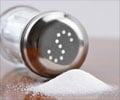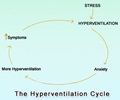- A Double-Blind Comparison of Moxonidine and Atenolol in the Management of Patients with Mild-to-Moderate Hypertension - (https://journals.lww.com/cardiovascularpharm/abstract/1992/20004/a_double_blind_comparison_of_moxonidine_and.10.aspx)
- Moxonidine for Prevention of Post-ablation AFib Recurrences - (https://clinicaltrials.gov/ct2/show/NCT01791699 )
- The Difficulties in Antihypertensive Drug Prescription During Lactation: Is the Information Consistent? - (https://www.ncbi.nlm.nih.gov/pmc/articles/PMC4683560/ )
- Moxonidine treatment of hypertensive patients with advanced renal failure - (https://pubmed.ncbi.nlm.nih.gov/12923404/ )
- Moxonidine in the treatment of overweight and obese patients with the metabolic syndrome: a postmarketing surveillance study - (https://pubmed.ncbi.nlm.nih.gov/15269705/ )
Moxonidine Medication Information
Discover comprehensive details about Moxonidine, including its pronunciation, uses, dosage instructions, indications, and guidelines on how and when to take it or avoid it.
The updated prescription information covers potential side effects, precautions, warnings, and storage recommendations.
Additionally, explore the Moxonidine brands available in India and internationally, along with pricing information. For personalized advice, consult your healthcare provider.
Generic Name : Moxonidine Pronunciation : mox-ON-i-dee Therapeutic Classification : Anti- Adrenergic Blockers - Centrally ActingBrand Names or Trade Names of Moxonidine
International :
Overview of Moxonidine
• Moxonidine is a new generation centrally acting antihypertensive agent similar to clonidine that is used in the treatment of increased blood pressure in adults.Why is Moxonidine Prescribed? (Indications)
Moxonidine is used to treat mild to moderate essential hypertension.Essential hypertension is also known as primary hypertension or idiopathic hypertension which means it does not have an identifiable cause.
It is used to control the raised blood pressure mainly when first and second line therapy drugs such as beta-blockers, thiazides, ACE inhibitors and calcium channel blockers fail to control blood pressure or are contraindicated or not tolerated.
When should Moxonidine not be taken? (Contraindications)
Moxonidine should not be used in patients with:• Allergy to moxonidine drug
• Rare hereditary problems such as galactose intolerance, malabsorption of glucose and galactose or Lapp lactase deficiency
• History of angioedema
• Severe heart failure
• Heart conduction disorders such as sick sinus syndrome and sino-atrial block
• Raynaud’s syndrome (arterial spasm which results in reduced blood flow)
• Severe liver or kidney disease
• Depression and seizure disorders
• Intermittent claudication
What is the dosage of Moxonidine?
• The recommended adult dosage of moxonidine is 200 micrograms (mcg) daily.• If the therapeutic effect is insufficient, the dosage can be increased to 400 mcg per day after three weeks either as a single dose in the morning or twice daily in the morning and evening.
• The dosage can further be increased to 600 mcg two times daily if effects are still not seen. However, the maximum dosage should not exceed 600 mcg in a day 400 mcg for a single dose.
How should Moxonidine be taken?
• Moxonidine comes as a tablet which should be taken by mouth.• It can be taken either before or after food as moxonidine has no interaction with food.
• The tablet should be swallowed whole with sufficient quantity of water.
What are the warnings and precautions for Moxonidine?
• Beta blockers should be withdrawn first followed by moxonidine after a few days when this combination needs to be discontinued.• Moxonidine should not be stopped immediately and a gradual reduction of dosage is advised in order to prevent rebound hypertension.
• Breastfeeding should be stopped if moxonidine is to be given to a nursing mother as moxonidine is excreted into breast milk.
• Moxonidine should not be given to children and adolescents under 16 years because of the lack of sufficient medical data in these groups.
• Dosage adjustments must be considered in patients with moderate kidney disease (maximum of 400 mcg daily) and severe kidney disease (maximum of 300 mcg daily).
What are the side effects of Moxonidine?
Gastrointestinal: Dry mouth, diarrhea, dyspepsia, nausea, and vomitingCardiovascular system: Decreased blood pressure and reduced heart rate
Central Nervous System: Headache, dizziness, drowsiness, vertigo, insomnia or difficulty in falling asleep, sudden temporary loss of consciousness
Skin: Rash, pruritus and facial edema
Others: Back pain, neck pain, muscle weakness and ringing sensation in the ears
What are the other precautions for Moxonidine?
• Moxonidine affects mental alertness and the ability to think. Therefore, it is advised not to perform any skilled tasks such as driving or operating heavy machinery when taking the drug.What are the Drug Interactions of Moxonidine?
• Concomitant administration of moxonidine with a thiazide diuretic results in decreased blood pressure.• Alcohol may increase the hypotensive effects of moxonidine.
• Tricyclic antidepressants such as amitriptyline and imipramine reduce the effects of moxonidine; therefore they should not be taken together.
• Moxonidine, a centrally acting antihypertensive agent increases the sedative effects of benzodiazepines, alcohol and tricyclic antidepressants and should be avoided taken concomitantly with them.
What are the storage conditions for Moxonidine?
• Moxonidine should be stored at a room temperature below 30° C.• Keep away from excess heat and moisture.
• Keep out of reach of children.









